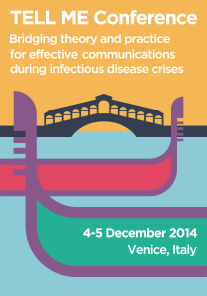Flu from A to Z
In order to improve the efficacy of communication during an outbreak, several institutions such as the World Health Organization (WHO), the European Centre for Disease Prevention and Control (ECDC) and the US Centre for Disease Control and Prevention (CDC), developed some communication guidelines, emphasizing that “effective outbreak communication is one of the tools that can help achieve the public health goal of bringing an outbreak under control as quickly as possible, with as little social disruption as possible”.
These guidelines are based on seven planning steps:
- assessment of existing public communication capacities and expertise;
- development of a coordination mechanism for communication;
- transparency;
- development of a system of information gathering during an outbreak;
- establishment of a communication evaluation mechanisms in place;
- development of a written communication plan;
- establishment of a communication training programme.
TELL ME will follow these criteria, with a particular interest in:
- providing a state-of-art assessment of best practices in risk communication;
- providing a comprehensive information about key stakeholders, target groups, and groups at risk of stigmatization and discrimination;
- providing policy makers, public health agencies, and communicators with a new model of crisis communication on the basis of which messages can be produced for different sub-populations in different countries;
- specifically developing and testing strategies to support vaccine uptake with special focus on new communication strategies for health professionals/agencies to engage with vaccine-resistant groups.


